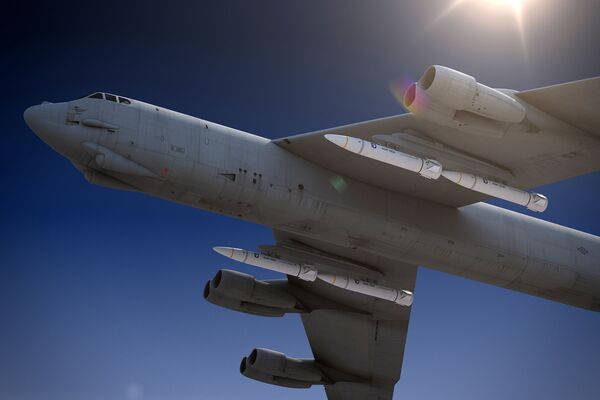- About
- Intara
- Capabilities
- Advisory
- Resources
- News
- Store
28 March 2022
Pentagon budget 2023: Hypersonic weapons to get USD4.7 billion boost
by Daniel Wasserbly


The US Air Force, in collaboration with Lockheed Martin, is still testing the ARRW air-to-surface hypersonic weapon and has not requested any procurement quantities. (USAF)
Hypersonic-speed strike weapons remain a high development priority in the Pentagon's fiscal year (FY) 2023 budget. The Department of Defense (DoD) requested USD4.7 billion in research, develop, test, and evaluation (RDT&E) funding for several projects, according to documents released to reporters on 28 March.
In the FY 2022 budget, DoD requested about USD3.8 billion for hypersonic weapons projects.
In its FY 2023 budget documents, DoD said it aims to “field hypersonic weapons within the [five-year defence plan]”. This would include a land-based hypersonic missile battery by FY 2023, hypersonic weapons aboard DDG 1000 ships by FY 2025, and a hypersonic cruise missile by FY 2027.
In 2018 the Pentagon announced that the US Navy (USN) would lead development for a common hypersonic glide body (C-HGB) for use on hypersonic weapon programmes across the services. The common glide vehicle is based on the Alternate Re-Entry System that was developed by Sandia National Laboratories and the US Army.
For its part, the USN's Conventional Prompt Strike (CPS) would receive USD1.205 billion in FY 2023, down from USD1.374 billion in FY 2022, but above the USD1.008 billion in FY 2021. The CPS programme is designing a missile comprised of the C-HGB and a 34.5 in two-stage booster – it could arm the USN's Virginia Payload Module as well as DDG 1000 ships.
Already a Janes subscriber? Read the full article via the
Client Login
Interested in subscribing, see What we do
Hypersonic-speed strike weapons remain a high development priority in the Pentagon's fiscal year (FY...
Associated services
 Details
Details 